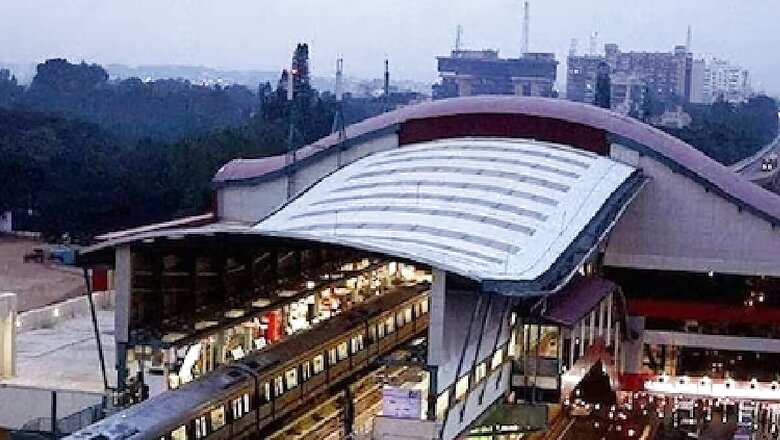
views
The much-awaited Yellow Line of Bangalore Metro seems closer to reality with authorities announcing a potential opening by the end of this year.
The official deadline, previously set for July 2024, might be surpassed.
Bangalore Metro Rail Corporation Limited (BMRCL) shared that trial runs on the Yellow Line would commence in the next four days, utilizing a prototype driverless train recently imported from China. The 19.15-km route connects RV Road to Bommasandra, passing through key locations like Jayadeva Hospital, Silk Board Junction, and Electronics City.
Initial trial runs will stretch between Bommasandra and Silk Board Junction, expanding across the entire line by mid-April, according to Jitendra Jha, BMRCL’s Project Manager, as reported by Deccan Herald.
However, commercial operations await approval from authorities like the Research Designs and Standards Organisation (RDSO), Commissioner of Metro Rail Safety (CMRS), and the Railway Board.
Initially, Yellow Line trains will run every 15 minutes, with the possibility of shorter intervals (five minutes or less) when eight additional trains arrive next year. The lack of trains had caused delays in commercial operations despite the completion of civil construction and track-laying.
In 2019, CRRC Nanjing Puzhen Co Ltd won a contract to supply 216 coaches, with 12 coaches imported from China and the rest assembled by Titagarh Rail System Ltd (TRSL) in Bengal.
The BMRCL showcased the driverless train at the Hebbagodi depot, emphasizing its significance as the first of 15 trains for the Yellow Line. The train will undergo a series of tests over the next few months, with optimism for more trains arriving by June.
Notably, BMRCL highlighted that all trains on new metro lines would be driverless, equipped with Unattended Train Operations (UTO) technology. While initially, Yellow Line trains may operate with loco pilots, the BMRCL expressed confidence in the UTO system, ensuring collision prevention.
The metro-road flyover from Ragi Gudda to Silk Board Junction, spanning 3.13 km, is in its advanced stages of construction, with five loops and ramps for increased connectivity.
Excitingly, driverless metro trains will feature advanced integration with a signaling system, allowing them to communicate and prevent collisions.
Additional features include Artificial Intelligence-based track monitoring, obstacle and derailment detection, and a gangway system for better maneuvering around curves. The BMRCL also plans to use side indications to reserve compartments for women.
















Comments
0 comment